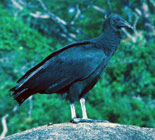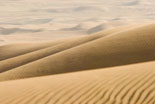 |
 |
 |
 |
|
 |
|
"Thinking About Wilderness"
The Wild Foundation Web site
By Dr. Michael Tobias
March 12, 2010
There was a time when people gave no thought to wilderness; when our connection to the natural world was a guaranteed issue of food, shelter and avoidance of pain. Given the 120,000 odd years of our position in the global coordination of species and the toll of our behavior, we have come a long ways, to be sure, from that innocent past, as we approach the staggering 7 billion number of individuals. Typically, such numeric prodigiousness would be construed as a biological success, but we know it is not. As Marilyn Hempel, editor of the Population Press recently pointed out, “if fertility remains constant at the levels of 2005-2010, the population of the less developed regions will increased to 9.8 billion in 2050 instead of the 7.9 billion projected by assuming that fertility declines [those projected by the most recent United Nations Population Prospects publication].”
Indeed, says Hempel, “without further reductions of fertility world population could increase by nearly twice as much as currently expected!”
Given that slightly less than 13% of the terrestrial planet and 1% of the world’s marine areas are so far protected under any of the more than thirty standard protection indicators, particularly those designated by the IUCN, this consumptive species of ours faces a daunting dilemma that every working conservationist is more than familiar with. The corridors and parks set aside for the sole benefit of the Other-Nature; or those areas explicitly recognized as protected for habitat, sustainability and development – often driven by the needs of indigenous human habitants, as well as the integrity of the ecosystems they are dependent upon – leaves much doubt as to our willingness or ability to concede something beyond ourselves, those of us who comprise the majority of human denizens, living in urban environments across the planet.
Factoring in the increasing levels of animal consumption by humans and the equation becomes yet more murky, in a world of dramatic climate shifts.
Back in November, 1979 author/naturalist John Fowles wrote a cover story for Harper’s Magazine entitled “Seeing Nature Whole” which began with a kind of heresy, as Fowles thought of it, namely, the realization that Carl von Linné, best remembered as Linnaeus, had exploded the unity of humanity and nature by forging ahead with a binomial nomenclature that would ensure a complete dissociation of feelings and needs, deep urgings and instincts from that which could be defined, and set in concrete: the natural world, and our place within it. Instead of a deep immersion in nature that could be described as metaphysical, Linnaeus had set about to define everything by a Latin, mechanistic hierarchy, as Darwin and scientific method would continue to do. The Victorian work ethic, and its immense hegemony, abetted by iron and steel, coke ovens and steam engines, as well as the obsession with collecting specimens and stuffing them for museums, could not be more at odds with today’s realities. Fowles wrote, “I do not dispute the value of the tool he gave to natural science (speaking of Linneaus)-which was in itself no more than a shrewd extension of the Aristotelian systemŠ.but I have doubts about the lasting change it has effected in ordinary human consciousness.”
The question of consciousness begs an even deeper issue, namely, human conscience. For all of the practical antidotes that conservation biology and sustainability thinking have come up with to protect remaining habitat and species, the matrix of “pain” as a primary qualifier seems to have been lost in the scientific, political and economic shuffle. The pain to individuals meted out by ecologists and non-ecologists alike. By that I refer to the long-overdue recognition that an enormous gulf exists between animal rights considerations and those of large-scale habitat protection. Humans are somewhere caught out in the middle of this debate; a seasoned, churning cauldron that-for many- poses no interest or discussion whatsoever, but is self-evident.
Whereas the majority of humans carry on as if they are the only species dwelling on the Earth, the others -perhaps 100 million species of more- being merely scientific white noise that occasionally delight our children seated in movie theatres or in front of their computers where a digitized lion, or shark or penguin can satisfy their thirst for entertainment, temporarily.
This is more than mere dilemma: it is core to the ethical basis of conservation that continues to elude us: how to minimize pain amongst individuals of all species whilst optimizing every hope of securing those safeguards necessary to ensure a free and future lineage of biodiversity.
http://www.wild.org/blog/thinking-about-wilderness/
![]() BACK TO TOP
BACK TO TOP

